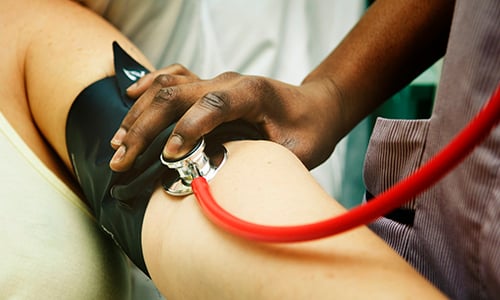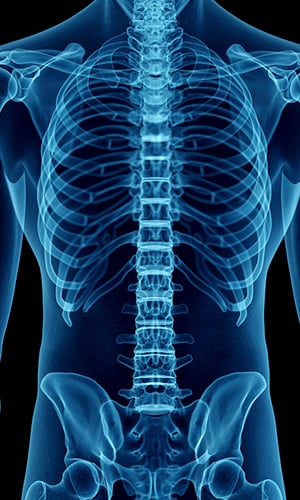Autonomic dysreflexia is a serious medical condition, but there are a few steps you or your caregiver can take immediately if you suspect you may be experiencing it.
If you have a spinal cord injury, you may be at risk for autonomic dysreflexia. This condition is serious and, left unchecked or unresolved, can cause stroke, seizure, or cardiac arrest. In simple terms, autonomic dysreflexia is an overreaction from your body’s autonomic system to something happening below your level of injury, which can elevate your blood pressure to dangerous levels.
There are many stimuli that can trigger autonomic dysreflexia. Some causes can be easily resolved, while others may require a trip to the ER.
Autonomic dysreflexia triggers and your action plan
You’ll find some common autonomic dysreflexia triggers in the table below, along with some possible remedies. Please note: This is not intended as medical advice and should not replace a formal diagnosis, but is simply general guidance. Please consult with your physician or ER doctor.
|
Autonomic dysreflexia triggers |
Potential Remedy & Notes |
|
Bladder Issues |
|
|
Overfilled catheter bag |
Empty overfilled catheter bag and replace with a new one. |
|
Kinked or blocked catheter hose |
Unkink or unblock the obstruction to ensure urine flow into your catheter bag. |
|
Catheter not connected properly |
Check your catheter connections and make sure they are configured correctly. |
|
Damaged or malfunctioning catheter |
Replace your catheter product. |
|
Incomplete bladder emptying (IC catheters) |
If you use an intermittent catheter, you should stay on your doctor’s recommended schedule. |
|
Bladder or kidney stones |
See your physician for possible medication or surgery |
|
Bladder medical tests |
Consult with your physician about the risks of any medical tests that may bring on autonomic dysreflexia. Two tests that are known to cause this problem potentially are urodynamics or cystoscopy. |
|
Urinary tract infections (UTIs) |
The use of a catheter increases the risks of UTIs. Consult with your physician for treatment and preventative measures. Your medical team may recommend different catheter products, new procedures, or a diet change to minimize infections. |
|
Bowel issues |
|
|
Constipation |
Constipation is a common issue for people with a spinal cord injury. Consult with your medical team about treatment. |
|
Hard stools |
Consult with your physician about possible treatments or medication. |
|
Digital stimulation |
Digital stimulation done too roughly or without enough lubrication can bring on autonomic dysreflexia. Proceed more gently and use plenty of lubricant. |
|
Bowel infection |
If you think you have a bowel infection or food poisoning, see your doctor or visit your closest ER immediately. |
|
Skin & Skin-related Issues |
|
|
Tight-fitting clothing, belts, braces, or shoes |
Loosen or remove any restrictive clothing, braces, or shoes. |
|
Pinched or constricted genitalia |
Examine your genitalia and loosen any tight undergarments, tights, or pants. |
|
Hard or sharp object pressing against the body |
Make sure to remove anything pressing hard against your body below your level of spinal cord injury. |
|
Ingrown toenails |
Check your big toes—a common problem area. Many ingrown toenails can be treated by soaking in warm water for 15 to 20 minutes, then placing cotton or dental floss under the toenail. If a home remedy doesn’t work, see your doctor. |
|
Insect bites |
A reaction to an insect bite can cause autonomic dysreflexia. There are home treatment options for minor bites; more severe reactions warrant an ER trip. |
|
Sunburns or minor burns |
Minor sunburn and burns heal on their own. Apply aloe vera lotion or gel to ease your body’s reaction to the burn. Other home remedies may ease symptoms too. |
|
Moderate or severe burns |
More severe burns likely need medical attention. Visit your nearest ER immediately. |
|
Pressure sores (ulcers) |
Pressure sores, or ulcers, are a common issue in people with a spinal cord injury. Contact your healthcare provider and stay off the affected area. Your doctor may apply special bandages. In severe cases, medication or surgery may be needed. |
|
Minor cuts and lacerations |
You or your caregiver should provide first aid to the area, cleaning the wound or scrape, applying an antibiotic, and covering the area. |
|
Other Causes |
|
|
Broken bones |
Visit your ER or doctor immediately. |
|
Moderate or severe cuts or lacerations |
Visit your ER or doctor immediately. |
|
Fractures |
Visit your ER or doctor immediately. |
|
Sexual activity |
Stop any sexual activity below your level of injury that may be causing the spike in blood pressure. Check your blood pressure again. If this is a recurring issue, ask your doctor about medication or treatments that may help you continue sexual activity more safely. |
Always err on the side of caution
Although we covered a lot of ground, this is not a complete list of all the potential autonomic dysreflexia triggers, but are some of the more common and well-known stimuli. Other possible things happening below your spinal cord injury level can cause an overreaction from your autonomic nervous system. If your symptoms don’t quickly resolve, please visit an ER immediately.
References:
- Autonomic Dysreflexia - Craig Hospital
- Autonomic Dysreflexia | Model Systems Knowledge Translation Center (MSKTC)
- Autonomic Dysreflexia - Craig Hospital
- Reeve Paralysis Resource Guide
- Autonomic Hyperreflexia: Causes, Triggers, and Symptoms (healthline.com)
- Autonomic Dysreflexia - What You Need to Know (drugs.com)
- Ingrown toenails - Diagnosis and treatment - Mayo Clinic
- Pressure Ulcers: 12 Ways to Prevent Them | Hollister US
- Sexuality & Sexual Functioning After SCI | Model Systems Knowledge Translation Center (MSKTC)









